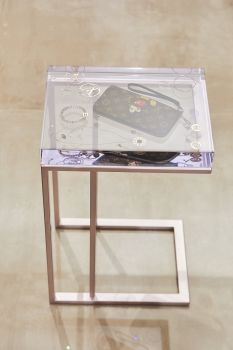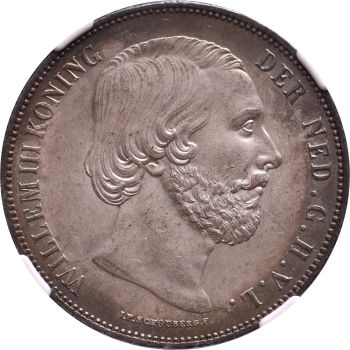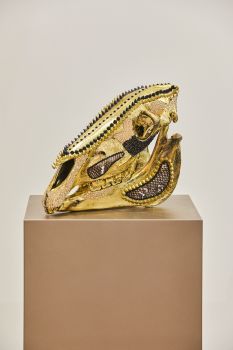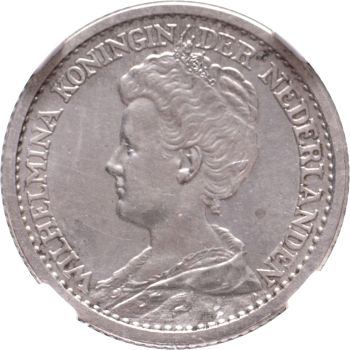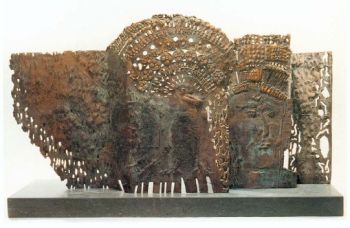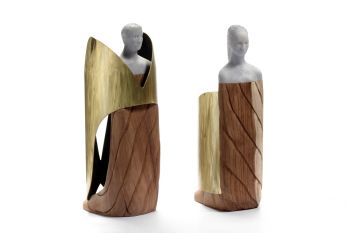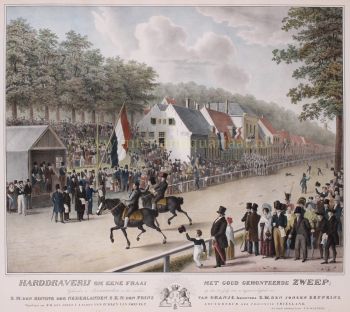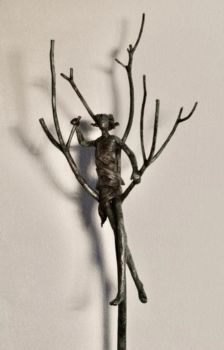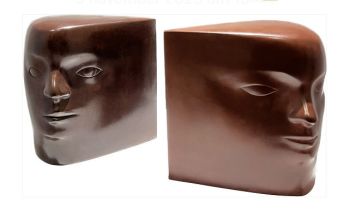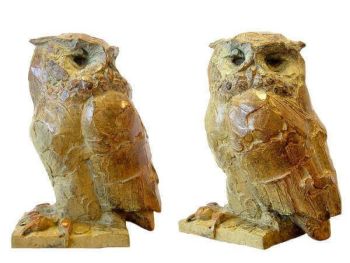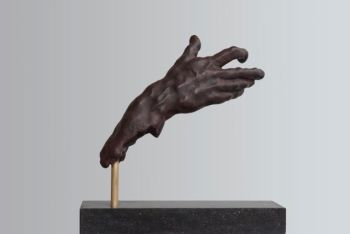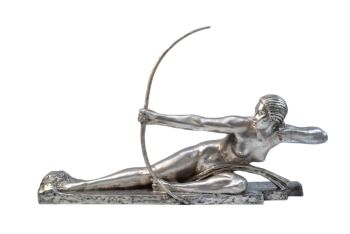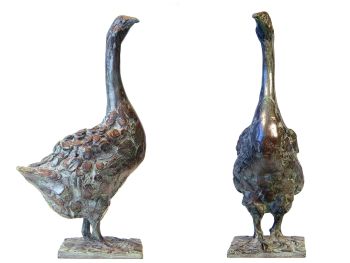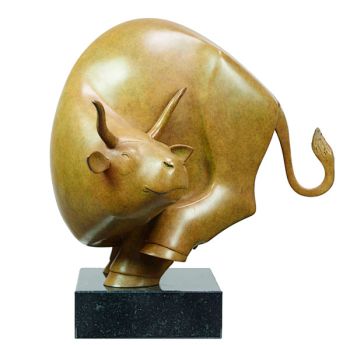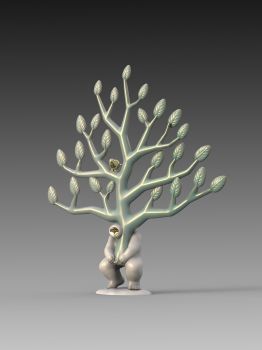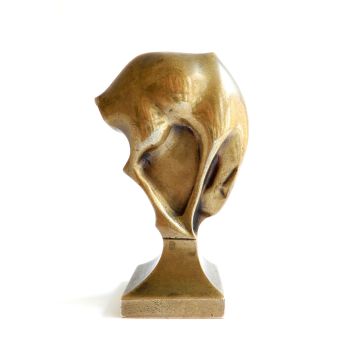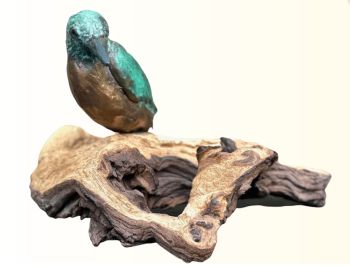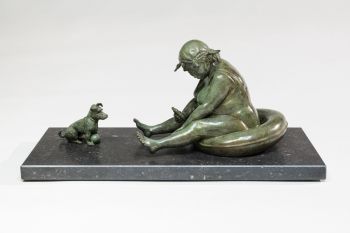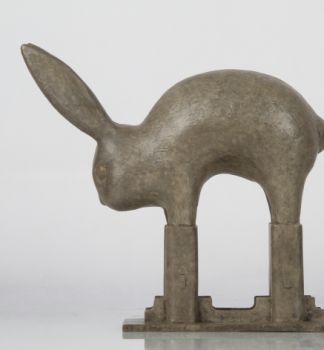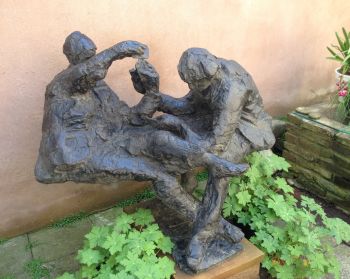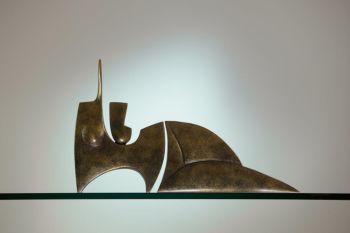Relógio francês Luís XVI Pórtico 1779 - 1781
Artista Desconhecido
MármorePedraBronzeMetalEsmalte
63 ⨯ 48 ⨯ 17 cm
Atualmente indisponível via Gallerease
- Sobre arteOn eight gilt bronze feet a moulded white marble plinth decorated with ormolu rosettes, panels and beaded bands. On the left and right on a slightly higher level and surrounded by ormolu posts, two high black marble bases support two inverted white marble fasces topped by ormolu armillary spheres. Between these bases a seated ormolu lion looks upwards towards the clock above. The clock is suspended from both the black marble bases as from the fasces. On top of the clock, on his own black marble base, an ormolu statuette of the Roman god Mars.
On the clock the white enamel dial shows three rings: the inner one with Arabic numerals for the date, the middle ring with Roman numerals for the hours and the outer ring indicates the minutes. Two pierced gilt brass hands for the hours and minutes and one steel pointer for the dates. The movement with anchor escapement and a duration of eight days. The pendulum disk in the form of an Apollo mask surrounded by the rays of the sun.
The ormolu decorations on the black marble bases consist of war trophies with scaled shields, quivers with arrows, halberds and flags, the whole topped by palm leaves as a symbol of victory. The very unusual inverted fasces are, even more unusual, topped by armillary spheres and moreover flank Mars, the god of war.
If this clock tells us something, it might be this: After the victories of war (trophies and palm leaves), man should bury his arms (inverted fasces) and concentrate on science and arts (the spheres).
After all, this clock was made in the age of reason when the purpose was to advance knowledge by scientific methods. Astronomy was one of the seven liberal arts (sciences) of the Renaisssance and astronomical discoveries concerning the moon, earth and sun were made around 1740-1770. These discoveries were being published by the French Académie des Sciences during the second half of the century.
The white enamel dial unsigned, but marked “à Paris”. - Sobre artista
Pode acontecer que um artista ou criador seja desconhecido.
Algumas obras não devem ser determinadas por quem são feitas ou são feitas por (um grupo de) artesãos. Exemplos são estátuas dos tempos antigos, móveis, espelhos ou assinaturas que não são claras ou legíveis, mas também algumas obras não são assinadas.
Além disso, você pode encontrar a seguinte descrição:
•"Atribuído a …." Na opinião deles, provavelmente uma obra do artista, pelo menos em parte
• “Estúdio de…” ou “Oficina de” Em sua opinião um trabalho executado no estúdio ou oficina do artista, possivelmente sob sua supervisão
• "Círculo de ..." Na opinião deles, uma obra da época do artista mostrando sua influência, intimamente associada ao artista, mas não necessariamente seu aluno
•“Estilo de…” ou “Seguidor de…” Na opinião deles, um trabalho executado no estilo do artista, mas não necessariamente por um aluno; pode ser contemporâneo ou quase contemporâneo
• "Maneira de ..." Na opinião deles, uma obra no estilo do artista, mas de data posterior
•"Depois …." Na opinião deles uma cópia (de qualquer data) de uma obra do artista
• “Assinado…”, “Datado…” ou “Inscrito” Na opinião deles, a obra foi assinada/datada/inscrita pelo artista. A adição de um ponto de interrogação indica um elemento de dúvida
• "Com assinatura ….”, “Com data ….”, “Com inscrição ….” ou “Tem assinatura/data/inscrição” na opinião deles a assinatura/data/inscrição foi adicionada por outra pessoa que não o artista
Artwork details
Related artworks
- 1 - 4 / 12
- 1 - 4 / 7
Artista Desconhecido
Japanese transition-style lacquer coffer 1640 - 1650
Preço em pedidoZebregs & Röell - Fine Art - Antiques
1 - 4 / 24- 1 - 4 / 24
- 1 - 4 / 24
































